Imagine stepping into your garden and finding a charming retreat that not only elevates the beauty of your space but also offers a cozy nook to unwind. Whether you’re a novice just dipping your toes into the world of outdoor aesthetics or a seasoned green thumb, “10 Charming Garden Shelter Ideas You Should Try” is your ticket to crafting a delightful haven. This guide is brimming with creative solutions that balance style with functionality, ensuring your garden becomes a sanctuary of comfort and beauty.
With each idea, you’ll discover practical ways to enhance your outdoor living experience, from adding shade on sunny days to creating a magical space for evening gatherings. These shelters promise to transform your garden into a cherished extension of your home, where you can enjoy the rewards of nature and design working in harmony. Let’s embark on this journey, confident that your outdoor areas will soon reflect the joy and satisfaction of a truly inviting garden oasis.
Incorporate Rustic Wooden Pergolas
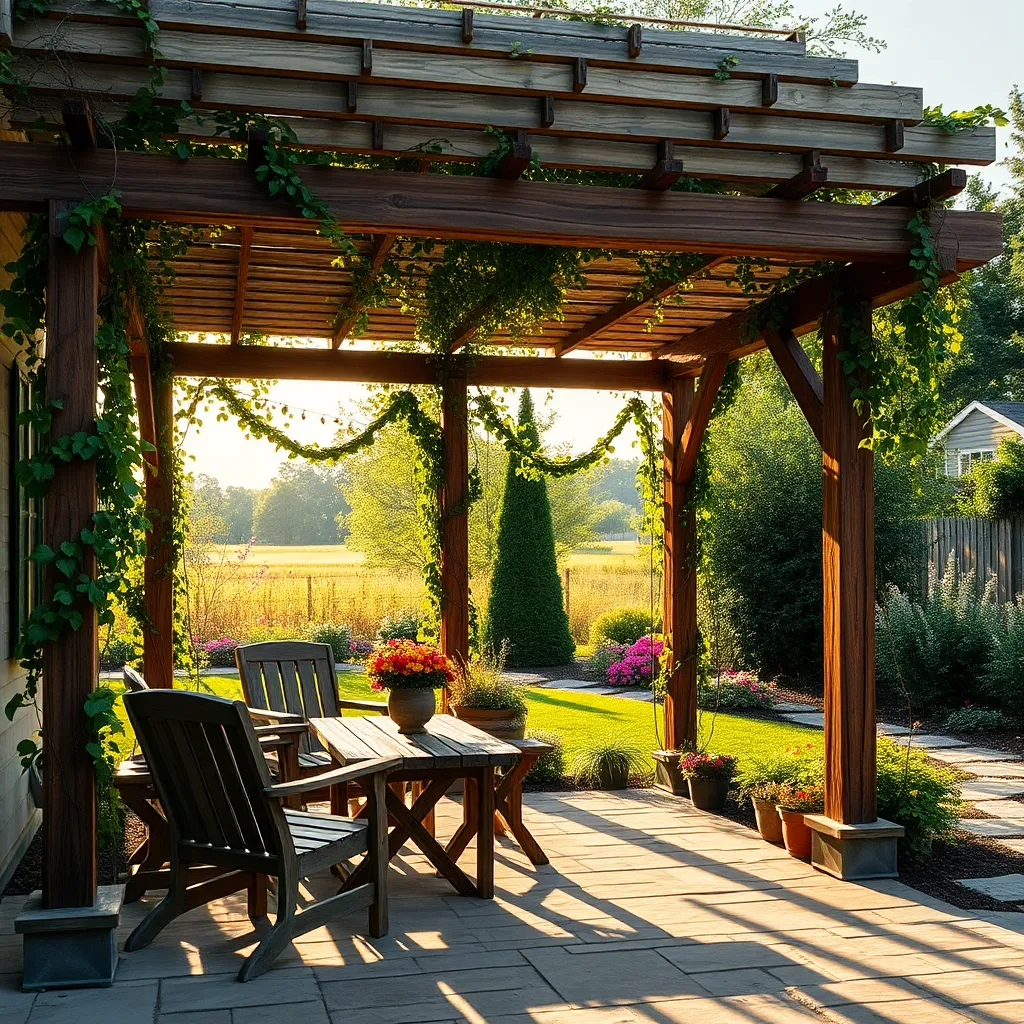
Adding a rustic wooden pergola to your garden can instantly enhance its charm while providing a functional space for relaxation. To get started, choose durable materials like cedar or redwood, which are naturally resistant to decay and insects. For a basic structure, consider dimensions of approximately 10 by 10 feet, which offers ample space without overwhelming your garden. Position the pergola to maximize sunlight and ensure it’s anchored securely in concrete footings for stability.
For a more advanced touch, incorporate climbing plants such as wisteria or clematis to create a lush, natural canopy. Use lattice panels or tension wires to support these plants as they grow. You can also add features like a retractable canopy or string lights for added functionality and ambiance. Integrate seating with weather-resistant furniture to create a cozy outdoor nook. By blending these elements, you’ll create a welcoming retreat that invites you to enjoy the garden year-round.
Use Climbing Plants for Shade
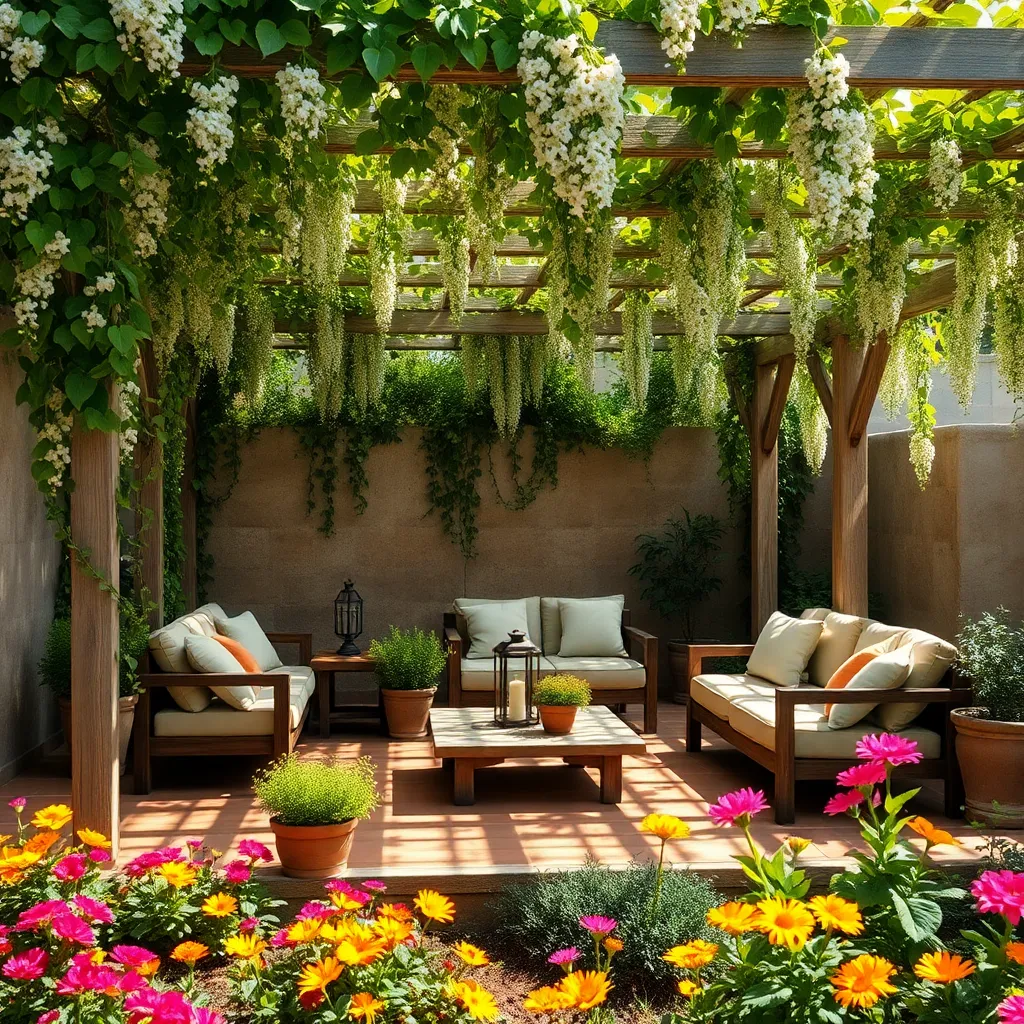
Enhancing your garden with climbing plants is an effective way to create natural shade and add vertical interest. For beginners, consider fast-growing options like clematis or honeysuckle, which are easy to train and maintain. Advanced gardeners might explore wisteria or grapevines, which require more attention but offer lush foliage and seasonal blooms or fruit. Secure a sturdy support structure like a trellis or arbor, ensuring it’s made of weather-resistant materials such as cedar or treated wood to withstand outdoor conditions.
Strategically position your climbing plants to maximize shade during the hottest parts of the day, typically on the south or west sides of your garden. Plant them at least 12-18 inches away from the base of your structure to allow room for growth and proper air circulation. For added visual appeal, use a mix of flowering and evergreen climbers to enjoy year-round coverage and color. Remember to regularly prune and guide the vines to prevent them from becoming too dense or unruly, maintaining a balanced and beautiful canopy.
Add Cozy Outdoor Curtains
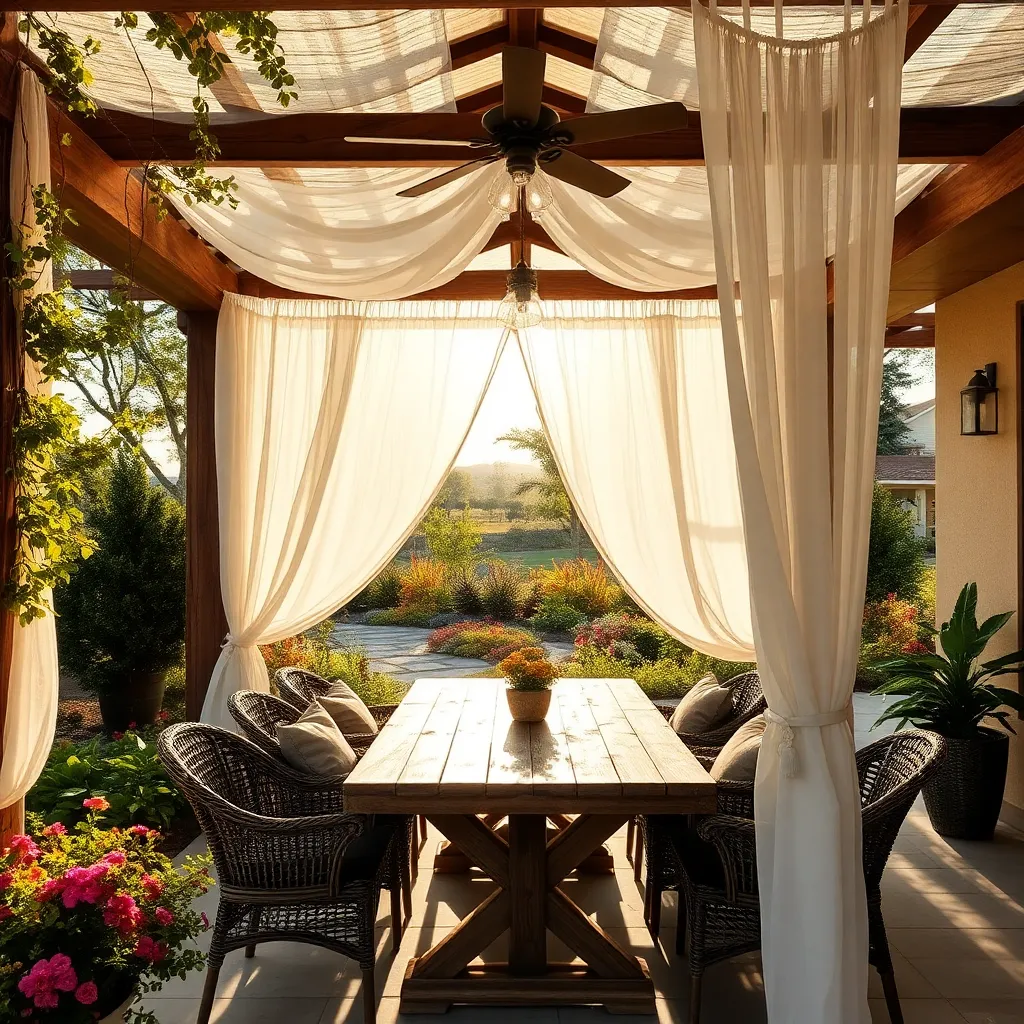
Adding cozy outdoor curtains to your garden structure can transform a simple shelter into a private oasis. Begin by selecting weather-resistant fabrics like acrylic or polyester, which are both durable and easy to clean. Choose colors and patterns that complement your garden’s aesthetic to enhance visual appeal. For installation, use sturdy rods or tension wires to hang the curtains, ensuring they are securely fastened to withstand wind and weather.
To achieve a more polished look, consider hemming the curtains to prevent fraying and add weights at the bottom to keep them in place. For a touch of sophistication, opt for curtain tiebacks that can also serve as decorative elements. Advanced gardeners might explore integrating smart curtain systems that allow for remote control of curtain positions, providing shade and privacy at the touch of a button. Whether you’re a beginner or an expert, these additions will make your outdoor space feel more inviting and intimate.
Install Retractable Awning Systems
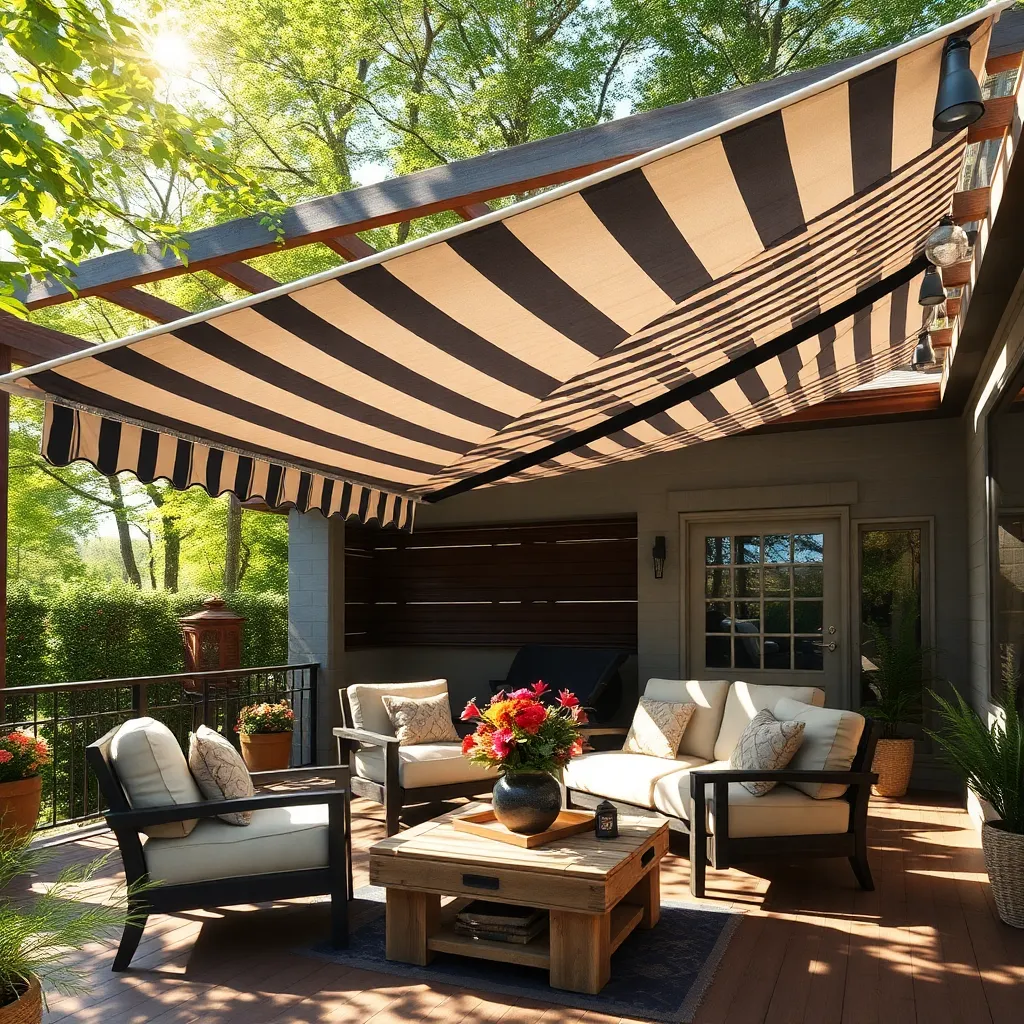
For those looking to combine functionality with style, installing retractable awning systems is an excellent choice. These systems offer flexibility, allowing you to enjoy the sun or shade at your convenience. Opt for materials like durable acrylic fabric, which is resistant to both UV rays and mildew, ensuring longevity and low maintenance. Beginners can start with a simple manual awning system, while more advanced DIYers might consider motorized options with remote controls for added convenience.
When installing a retractable awning, ensure it’s securely attached to a stable structure, like the side of your house or a sturdy pergola. Proper installation is key to maximizing the awning’s lifespan, so use heavy-duty brackets and bolts suitable for your wall type. For a personalized touch, choose a fabric color and pattern that complements your garden’s aesthetic. Remember, the ideal awning should extend at least 8-10 feet to provide ample coverage, creating a pleasant, shaded retreat in your outdoor space.
Create a Living Roof Canopy
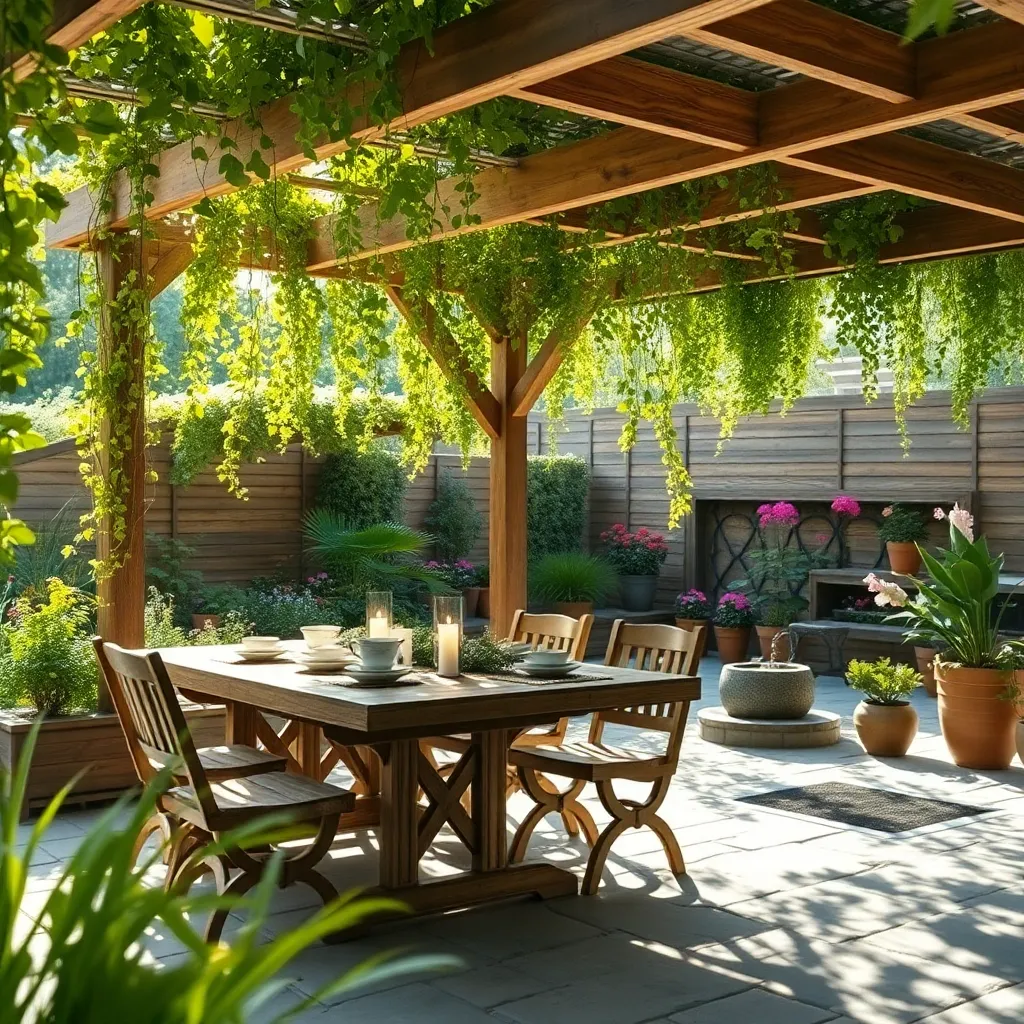
Transform your garden into a lush oasis by creating a living roof canopy. Start by constructing a sturdy frame using materials like treated timber or metal that can support the weight of soil and plants. For beginners, a simple pergola can serve as a base, topped with a waterproof membrane to protect the structure. Select hardy, low-maintenance plants such as sedums, succulents, and native grasses that thrive in various conditions. These plants not only provide shade but also improve air quality and biodiversity.
For those looking to add a touch of elegance, incorporate trailing vines like clematis or wisteria to cascade over the edges. Ensure you install a proper drainage system to prevent water logging and use lightweight growing mediums to reduce the overall load.
- Consider using modular green roof systems
- Include a mix of perennials for continuous color
- Opt for drought-tolerant species to reduce maintenance
These advanced techniques can transform your canopy into a stunning focal point while offering a serene retreat from the sun.
Design with Vintage Garden Arbors

Transform your garden into an enchanting retreat by incorporating vintage garden arbors. Start by choosing materials that reflect timeless elegance, such as wrought iron or aged wood, which add a classic charm to any setting. For beginners, a simple wooden arbor can be an easy DIY project. Ensure the arbor is at least 6 to 8 feet tall to comfortably walk under, and anchor it securely with concrete or heavy-duty stakes for stability.
Enhance the beauty of your vintage arbor by adorning it with climbing plants like roses or wisteria for a lush, romantic look. For more advanced gardeners, consider weaving delicate fairy lights through the structure to create an inviting evening ambiance. To make your arbor a focal point, position it at the entrance of your garden or along a pathway leading to a cozy seating area. This not only provides a visually appealing structure but also creates a delightful passageway that invites exploration.
Employ Bamboo Screens for Privacy
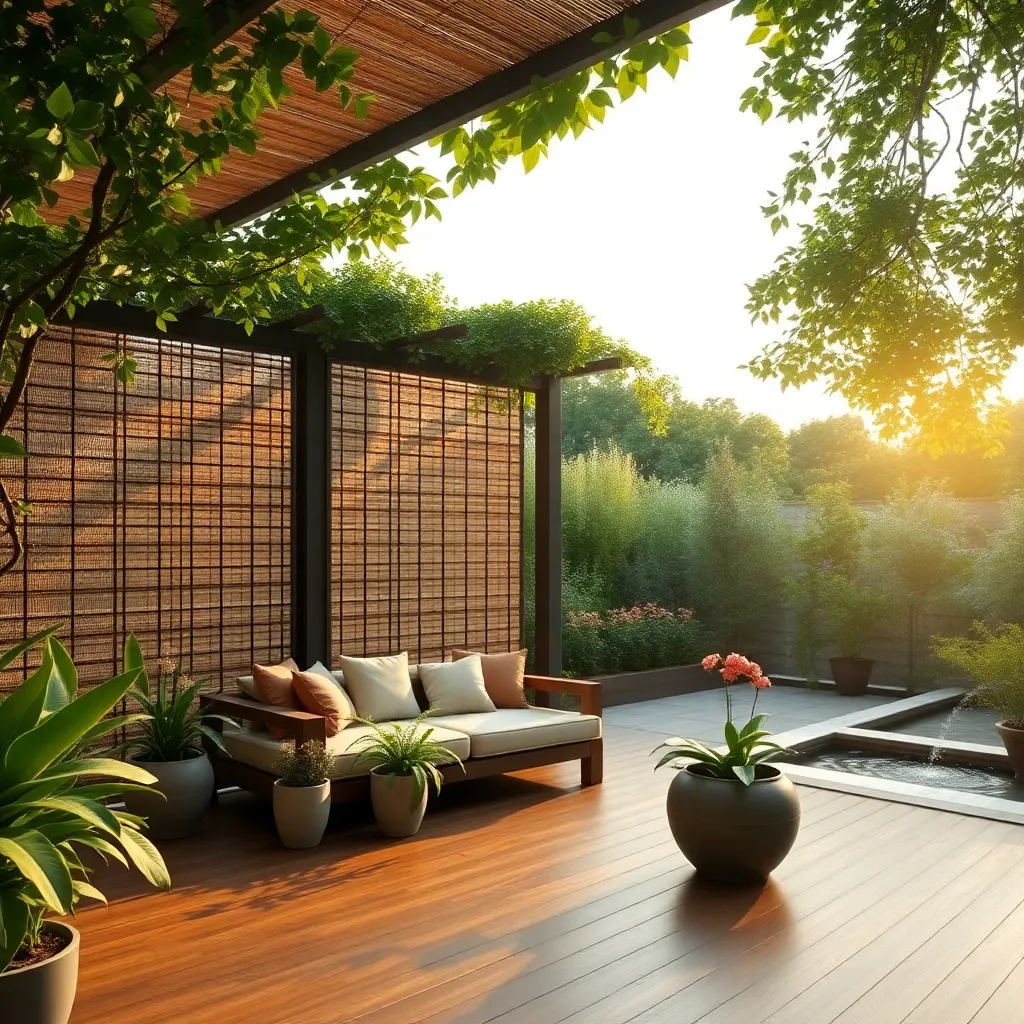
Using bamboo screens is a fantastic way to introduce both privacy and style to your garden. Bamboo is not only aesthetically pleasing but also eco-friendly and durable, making it an excellent choice for outdoor environments. For a simple installation, use pre-made bamboo panels that you can easily attach to existing fences or structures. Beginners can start with panels of around 6 feet in height to ensure adequate privacy, while more experienced gardeners might prefer customizing their screens by cutting bamboo canes to size and securing them with weather-resistant rope.
To elevate the design, consider integrating the bamboo screens with other elements like climbing plants, which can add greenery and texture. Opt for fast-growing vines such as clematis or honeysuckle that will quickly cover the screens and enhance the natural look. For added stability, anchor the bamboo screens with metal poles or wooden posts, ensuring they’re driven securely into the ground. This not only increases durability but also allows you to create a more permanent structure that withstands various weather conditions, providing a serene and secluded garden sanctuary.
Build a Simple Lean-to Shelter
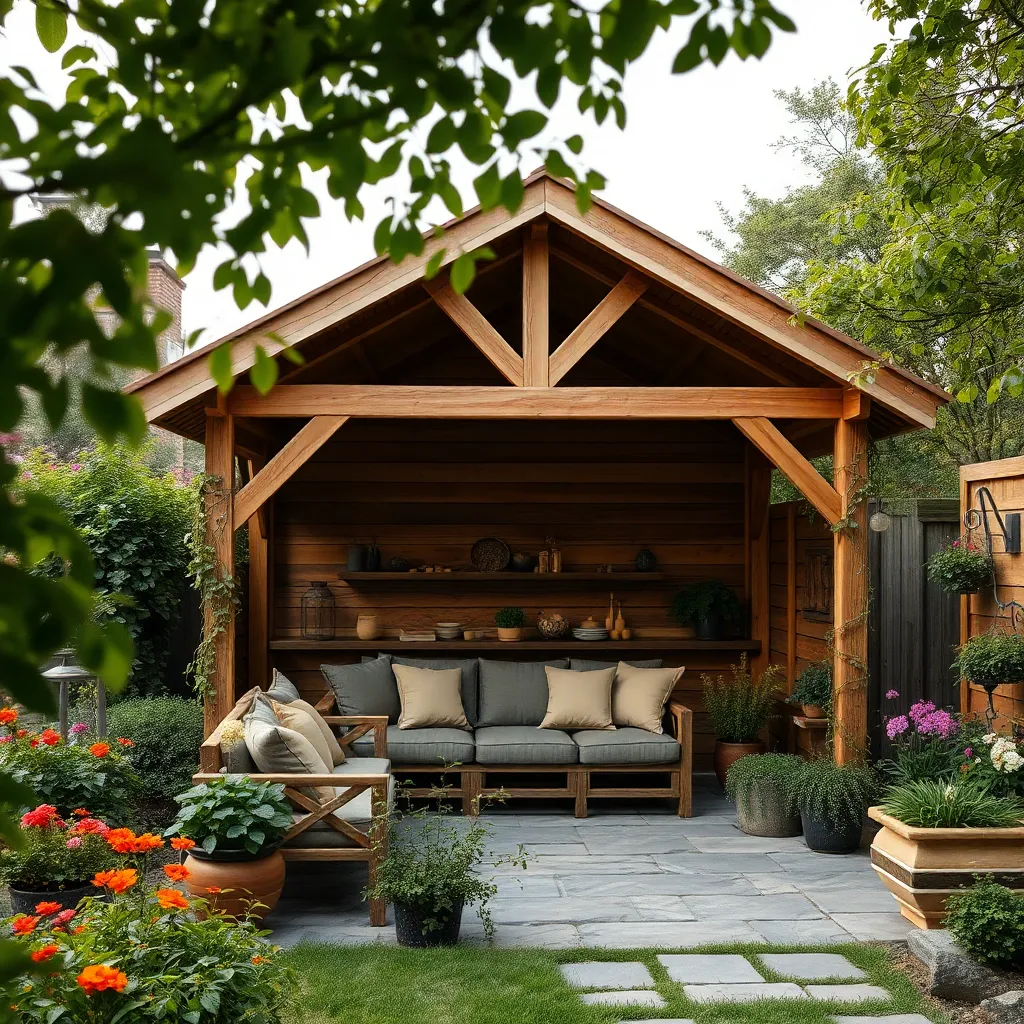
A simple lean-to shelter is a practical addition to any garden, offering protection from the elements while maintaining an open, airy feel. Begin by selecting a sturdy frame material such as treated wood or metal poles, ensuring stability against wind and rain. For beginners, a basic design might include a single sloped roof attached to an existing structure like a shed or your home, utilizing materials such as corrugated metal sheets or UV-resistant polycarbonate panels for the roofing.
Consider adding a touch of charm by incorporating natural elements like climbing plants or vines along the support beams, which can provide both shade and aesthetic appeal. For a more advanced project, you might include adjustable side panels or drapes to enhance versatility in varying weather conditions. Keep the dimensions practical; a height of at least 7 to 8 feet ensures comfortable clearance, while a depth of around 6 to 8 feet maximizes usability without overwhelming your garden space. With these straightforward steps, you can create an inviting, functional shelter that enhances your outdoor experience.
Integrate Solar-Powered LED Lighting
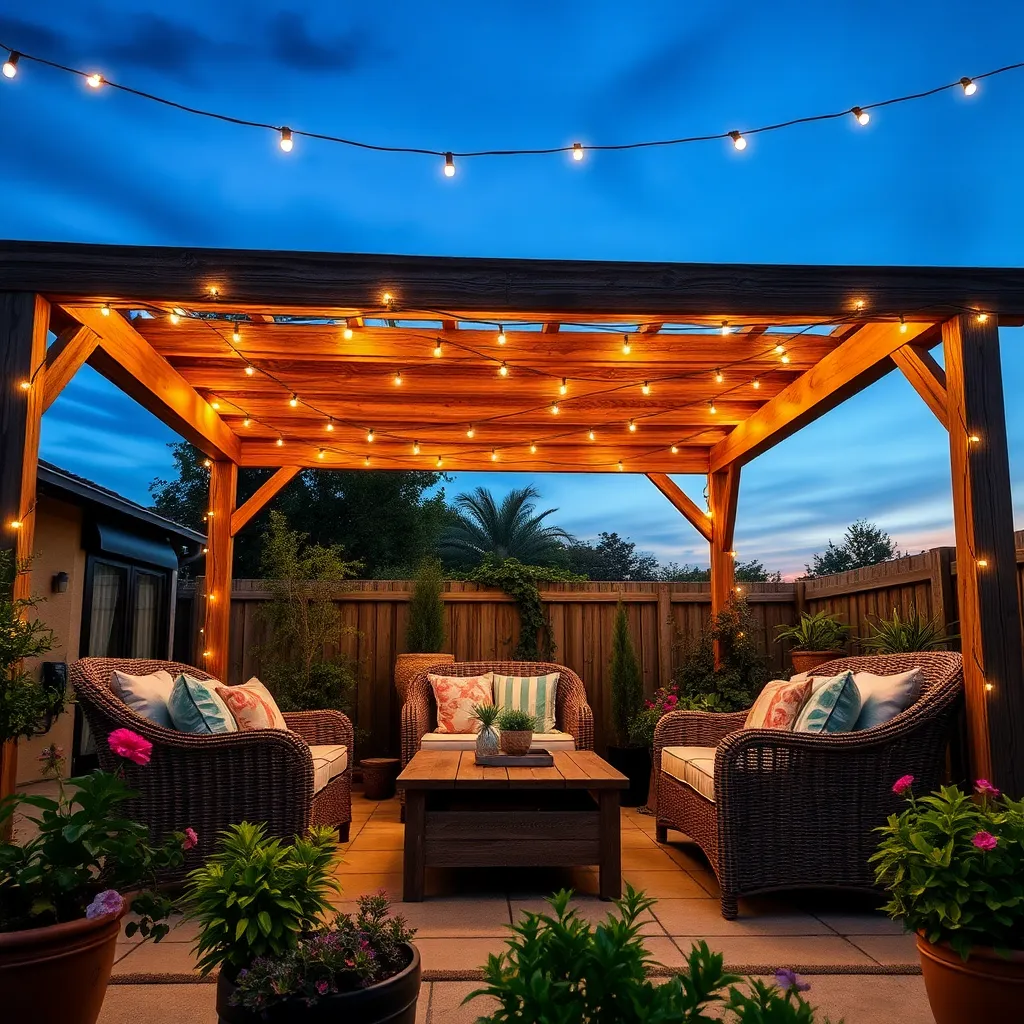
Enhancing your garden shelter with solar-powered LED lighting is an eco-friendly way to extend its usability into the evening hours. Begin by choosing waterproof solar LED lights, ensuring they’re suitable for outdoor use and can withstand various weather conditions. For a beginner-friendly setup, consider string lights that can be easily draped along the edges of your shelter or around support beams. These lights are simple to install and require no wiring, making them a perfect choice for those new to DIY projects.
For a more advanced lighting design, explore options like solar-powered floodlights or spotlights to highlight specific areas of your garden after dark. Position these lights at strategic points to enhance safety and create a warm, inviting ambiance. When selecting lights, check for adjustable panels and sensors to maximize energy efficiency and performance. By integrating solar lighting, you not only illuminate your space but also contribute to reducing your carbon footprint, making your garden both beautiful and sustainable.
Utilize Reclaimed Materials for Charm
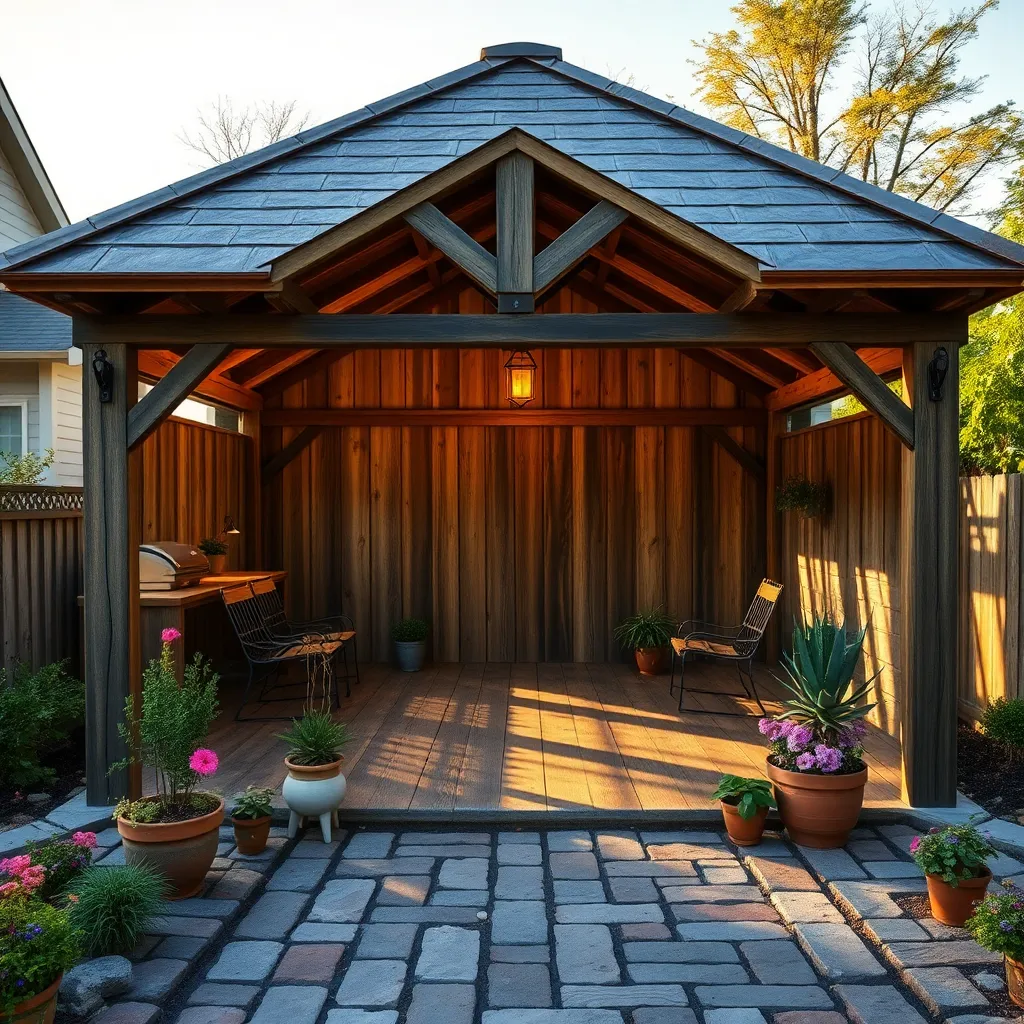
Transform your garden into a charming oasis by utilizing reclaimed materials for your outdoor shelter. Begin by sourcing old pallets, barn wood, or even vintage windows to create a unique structure that exudes character. These materials not only add a rustic appeal but are also environmentally friendly and budget-conscious. For beginners, start with something simple like a lean-to or pergola framed with reclaimed timber. Advanced gardeners might consider incorporating antique doors as focal points or decorative elements to enhance the shelter’s aesthetic.
When working with reclaimed materials, ensure they are properly treated to withstand outdoor conditions. A basic tip is to sand down rough surfaces and apply a sealant to protect against moisture. For those more experienced, integrating metal roofing from repurposed materials can provide both durability and a vintage look. Consider adding climbing plants such as wisteria or ivy to cover the structure over time, enhancing its charm as it blends with the natural surroundings. By creatively reusing materials, you can construct a shelter that’s not only functional but also a testament to sustainable gardening practices.
Conclusion: Creating Beautiful Outdoor Spaces
As we explored the ’10 Charming Garden Shelter Ideas You Should Try,’ each concept highlighted a unique way to nurture and grow your relationship. From creating a cozy nook that invites intimate conversations to designing a whimsical escape that sparks joy and adventure, these ideas remind us of the importance of crafting spaces that foster connection, relaxation, and shared memories. Building a garden shelter isn’t just about aesthetics; it’s about cultivating an environment where love and understanding can flourish.
Now, it’s time to take action. Choose one idea that resonates with you and start planning how you can bring it to life in your own backyard. Whether it’s a simple swing under a tree or a more elaborate gazebo, taking this step will not only enhance your outdoor space but also enrich your relationship.
Remember, great relationships are built on consistent, thoughtful actions. Bookmark this article so you can revisit these ideas whenever you need inspiration or a gentle reminder to invest in your relationship. As you embrace these charming concepts, know that you’re laying the groundwork for a future filled with deeper connection and enduring happiness. Together, let’s create spaces that celebrate love and companionship, now and for years to come.
